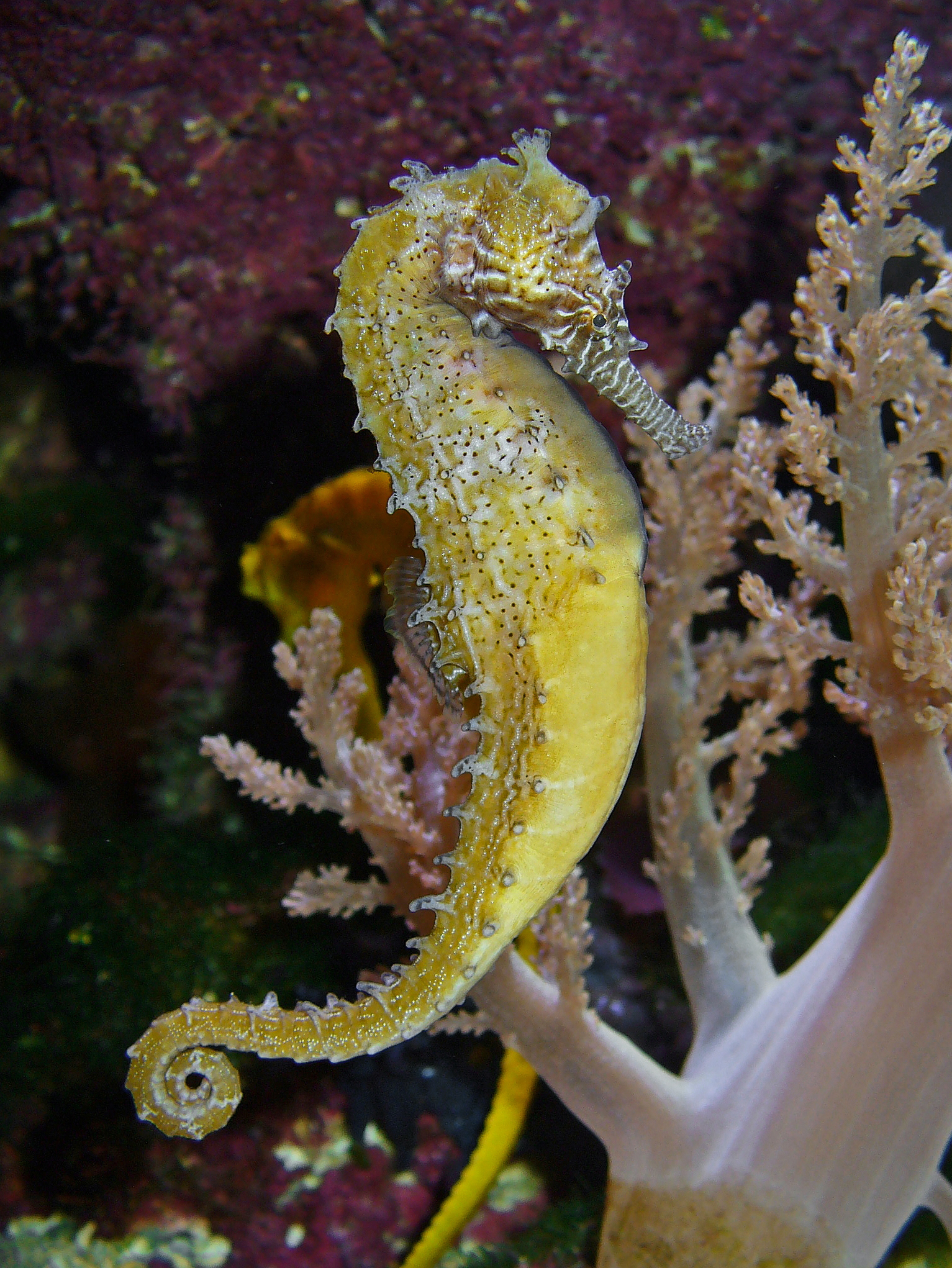secrets of a seahorse tail
by R. R. McCarthy
Michael Porter first began studying seahorses when his Ph.D. adviser, at the University of California-San Diego, handed him a seahorse and asked him to look at its armor. It seems strange to think that there’s any strength in a teeny seahorse at all, but it can withstand crushing forces better than many other animals. The trick is an interlocking mechanism that joins its bony plated armor together, allowing the tail to be highly flexible and impact resistant. Like other scientists, Porter has learned that it’s not only the composition of a material that makes a difference. Its configuration can be extremely important, too.
Porter directs the Natural Engineering Lab, whose mission is to integrate engineering with the study of biological materials and organisms for crossdisciplinary research. He wants not only to create sustainable designs—such as new mechanical devices and robotics—but also to learn more about natural systems and how they fit into their environments.
Porter says he has always been fascinated with how, and why, things work as they do. An avid surfer, he has spent most of his life near beaches around the country exploring aquatic life. Nowadays, when he hears the surf is up, he still likes to get away occasionally to the coast of South Carolina or Florida.
At Clemson, Porter has continued his research on the seahorse, focusing his attention on the animal’s prehensile tail, with a structure that is markedly different from other tails. A cross-section reveals that the animal’s tail is a series of square boxes, each composed of four interlocking, right-angled plates. It’s not cylindrical as is, say, a monkey’s tail. It has external plating that’s organized to hold on to objects. Its structure is quite complicated; it has external plating that surrounds the vertebrae column, with ball-and socket, peg-and-socket, and gliding joints. The four angular, overlapping plates that make up each square unit of the tail are bony, but they contain a lot more collagen than ordinary bone. The collagen makes the plates flexible, allowing them to bend without breaking, but the mineral content of the bones makes them stiff. Bones usually are composed of about 65 percent stiffening mineral and 35 percent collagen. The plates in a seahorse tail have a mineral content of only 40 percent, which allows them to deform under pressure and then spring back when other bones would ordinarily be broken or crushed.
Porter printed out a three-dimensional model of a seahorse tail and a hypothetical round tail for comparison. He then subjected the two tails to a series of tests to gauge their strength, impact resistance, and flexibility. The seahorse tail was stiffer than the cylindrical tail and also able to absorb more energy. When subjected to compressive forces, the seahorse tail flattened out, but, once released, it fell back into place. At high-stress locations, the seahorse tail has joints that prevented failure. When Porter twisted the seahorse tail replica and then released it, he found that it returned to its resting position. The square design of the seahorse tail gives it more surface contact when grasping objects.
He concluded that the seahorse’s square tail is, in many ways, better than the cylindrical tail. It’s stiffer and stronger, as well as being more elastic. His paper on the research, “Why the Seahorse Tail is Square,” was published in a recent issue of Science magazine. The musculoskeletal structure of the tail may lead to future robotics applications. But that’s not why Porter is studying it, he says. His motivation is to learn more about the basic science, the biomechanics of the tail.
Bio-design is a cutting-edge topic: Across the country, engineers are studying all sorts of animals and insects on the micro and nano-level, and are designing devices based on their findings.
Fall semester at Clemson, Porter designed and taught an undergraduate mechanical engineering class on biomimetics and bioinspired design. He laughs when he talks about the amount of work required to plan, research, and execute a new course, adding that he’s looking forward to teaching it the second time. Bio-design is a cutting-edge topic: Across the country, engineers are studying all sorts of animals and insects on the micro and nanolevel, and are designing devices based on their findings—wall-climbing robots with the same directional adhesive abilities as geckos, a cane for sight-impaired people based upon bats’ ability to navigate with ultrasonic echoes, and the tapered nose of a Japanese bullet train with a design derived from the beak of a kingfisher.
Porter says he wanted to introduce biology to undergraduates “who may not have had any biology since high school.” Students learned not only about bio-design, but also about biomimetics (the study of how various aspects of nature can be mimicked to solve human problems), structural biopolymers, biological materials science, surface textures, and animal locomotion, among other topics. He taught the mechanics of biology, solid mechanics, and fluid mechanics.
Nakul Ravikumar is a doctoral student in mechanical engineering and a teaching assistant in Porter’s lab. Because, he confesses, he hadn’t had a biology course in years, he audited the class. He says the students were excited about bio-design and seemed to enjoy learning the topics, especially locomotion and flight.
“He talked about biology in the beginning and then linked it to mechanics,” Ravikumar says. “He concentrated on aquatic and ground locomotion and flight. And when it came to prehensile abilities, he talked about his research on the seahorse tail.”
The course has helped Ravikumar think about possibly collaborating with other departments for his doctoral research. He believes that in using biomechanics “we can reduce the waste we produce. Green energy is so important.”



